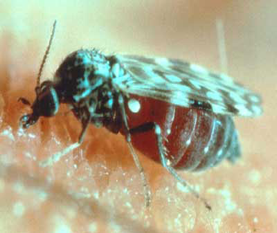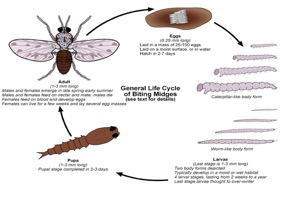Knowing mosquitoes
Mosquitoes are said to have been around for more than 30 million years and there are around 3000 of their species. Over the years, they have adopted the ability to locate their prey through chemical, visual and heat sensors. They can detect carbon dioxide and lactic acid from up to 100 feet away. Mosquitoes use their heat sensors to detect presence of warm blooded and mammals and birds. Although they are not visually inclined, they are able to see humans if their clothing match contrasts with the background. They are a nuisance because they spread diseases and germs through the sucking of blood.
Why mosquitoes are pests and health hazards:
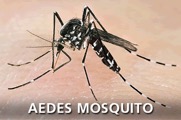
Mosquito Aedes
They include such species as the yellow-fever mosquito (Aedes aegypti) and the Asian tiger mosquito (Aedes albopictus). They are strong fliers, capable of travelling great distances (up to 75 miles/121 km) from their breeding sites. They persistently bite mammals (especially humans), mainly at dawn and in the early evening.
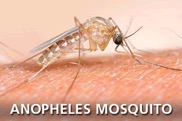
Mosquito Anopheles
They include several species, such as the common malaria mosquito (Anopheles quadrimaculatus), that can spread malaria to humans.
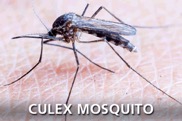
Mosquito Culex
They include several species such as the northern house mosquito (Culex pipiens). They persistently bite (preferring birds over humans) and attack at dawn or after dusk. These mosquitoes can carry many types of diseases that are caused by bacteria, parasites or viruses. These diseases include: Dengue Fever, Chikungunya, Malaria, Yellow Fever and Encephalitis.
These mosquitoes can carry many types of diseases that are caused by bacteria, parasites or viruses. These diseases include: Dengue Fever, Chikungunya, Malaria, Yellow Fever and Encephalitis.
Mosquito life cycle
Mosquitoes have a four stage life cycle, starting from an egg, larva, pupa and then finally an adult mosquito. Eggs are laid in stagnant water or on moist places such as damp soil, as water is essential for breeding to occur. The eggs are laid in 100 to 300 at a go, it usually takes the eggs to hatch in two to three days in warm water. However, some eggs remain dormant for months as they require a drying period, they hatch when in contact with water.
Larvae feed on organic matter in the water. They breathe through an air tube which is extended through the water surface. They develop into pupae within a week and transform into adults in around 2 days.
Mosquitoes control
Since water is needed for breeding, it is needed to get rid of all sources of standing water. Our highly trained personnel will search for all active sources in your premises to prevent mosquitoes from infesting. We will also provide advice on housekeeping to ensure no stone is left unturned.
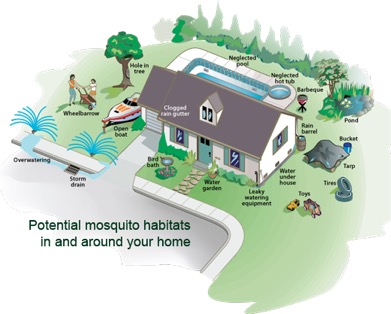
Biting Midges
Biting Midges are very small flies (0.5mm – 4mm long), renowned for their nuisance biting associated with coastal habitats. Although there is 200+ species present in Australia, only a few midges cause a serious annoyance to humans. As biting midges are one of the most difficult groups of insects to control, Australia Wide First Aid have recommended you follow the suggested preventive measures, to ensure you stay midge bite free this summer.
When and Where?
The biting activity of midges is mainly limited to periods of dawn and dusk, with their activity significantly increasing when humid temperatures are between 27-32 degrees Celsius. Midges often remain inactive through windy weather, finding shelter amongst shady vegetation.
Midges are most commonly associated with coastal habitats such as lagoons, estuaries, mangrove swaps and tidal flats (leading to the popular but misleading name of “Sandflies”). Biting midges usually disperse only short distances from their breeding sites.
Biting Midges
Females and males midges will both feed on vegetables fluids and nectar for energy, but only the female midge will bite. The female midge has piercing and sucking mouth parts, which suck blood and cause the classic allergic response. A bite is made in the skin and saliva is injected to prevent blood clotting, thereby allowing the blood to be sucked up. The females use the blood they obtain from sucking as a course of protein for developing a batch of eggs.
The classic allergic response to a midge bite is a small, inflamed bite. Despite the size, the bites can cause acute discomfort, irritation and severe local reactions. Itching may commence immediately after the bite, but usually begins some hours later. Most individuals are unaware they are being bitten at the time. Biting Midges have their greatest impact on people (i.e. tourists) arriving and visiting an area. Local residents tend to build up an immunity to the midge bites.
Health Impacts?
In Australia, biting Midges are not known to transmit any disease-causing pathogens to humans.
Preventative Measures
In Australia, there is no chemical that is registered for controlling midges in their breeding sites. Additionally, the breeding sites are usually very large, making chemical control unrealistic. Due to a non-efficient method for controlling biting midges, personal protection will help reduce your exposure to the bites. Australia Wide First Aid encourages you to:
- Avoid localities, especially at dawn and dusk. These are known to be frequented with biting midges
- Avoid watering your garden around sunset as midges are attracted to shady humid areas
- Wear protective clothing in the early morning, late afternoon and evenings. This includes long sleeve pants, long sleeve shirts with a collar and closed in shoes
- Apply DEET repellent (15-20%) to exposed skin. Focus on areas such as your ankles, neck and scalp
- When indoors, use ceiling and pedestal fans as a deterrent. Midges don’t like air currents and will potentially stay away. Mosquito coils also work reasonably well.
Treatment
The application of a cold compress, such as an ice pack or wet cloth will provide some relief. An antihistamine will help with the swelling and itching as well. In severe cases, medical advice may be required.

